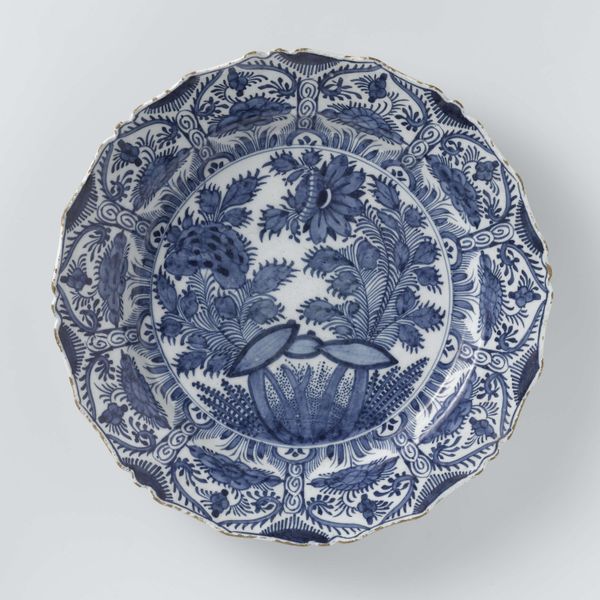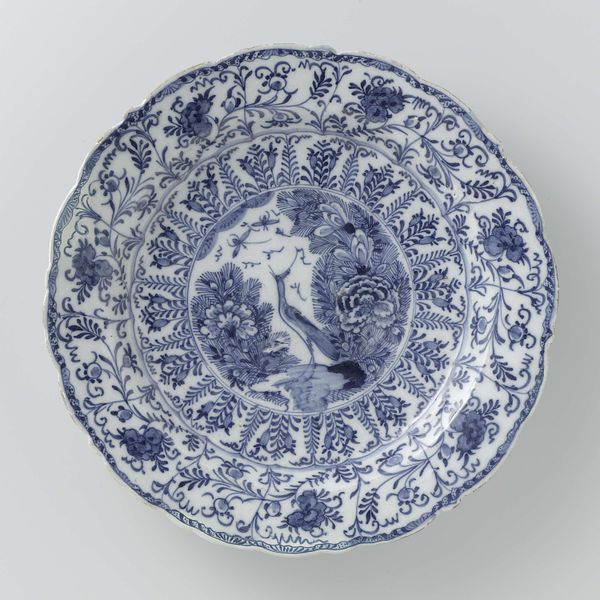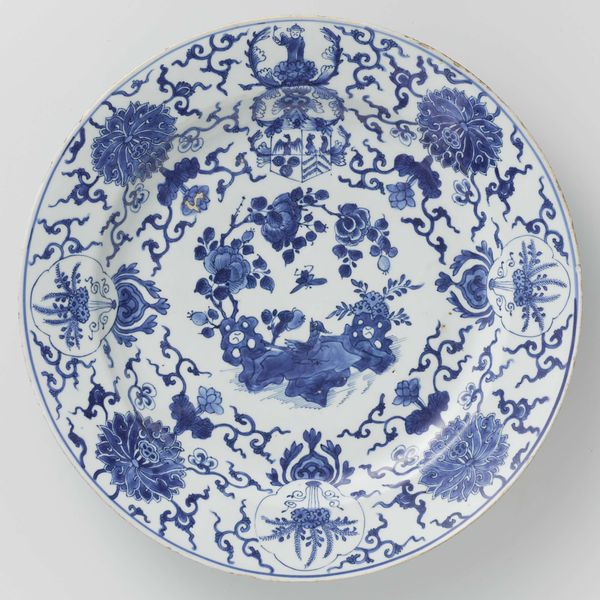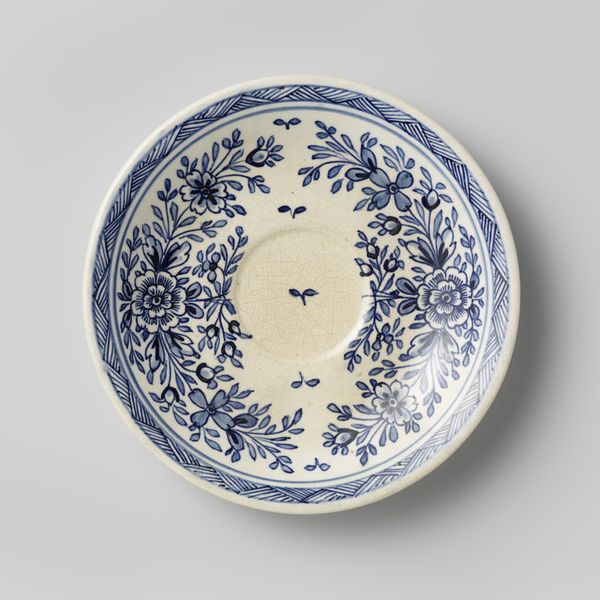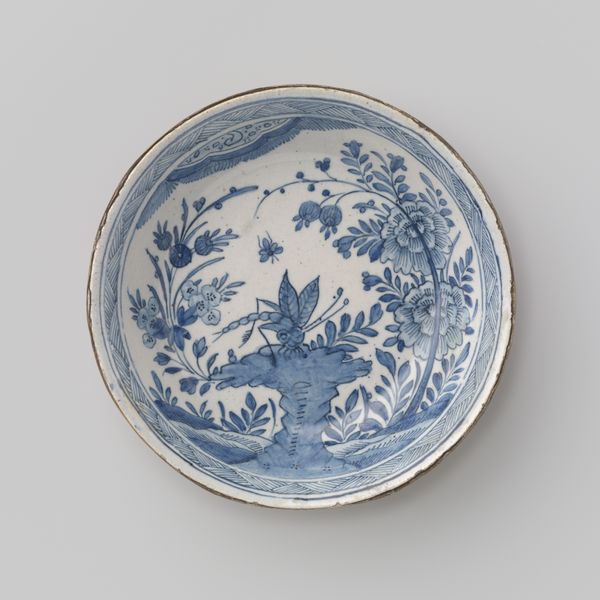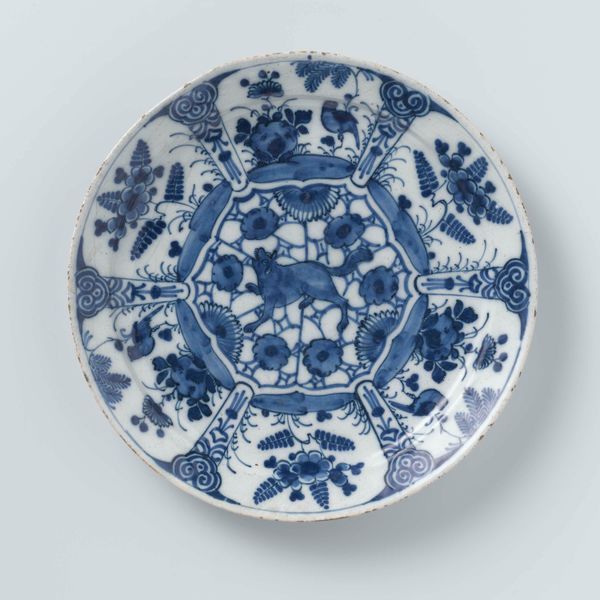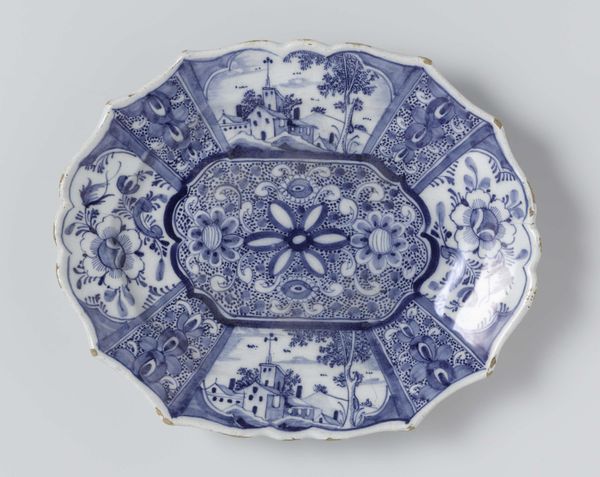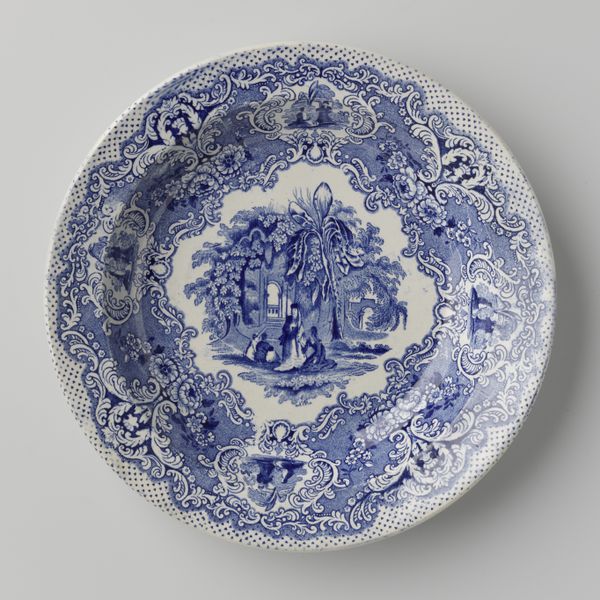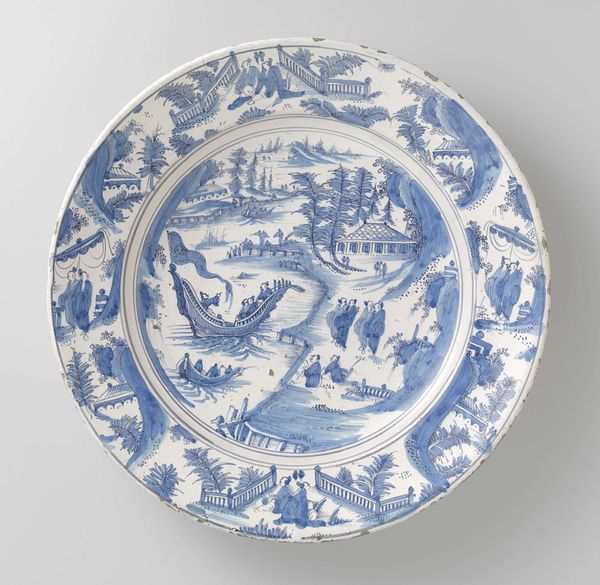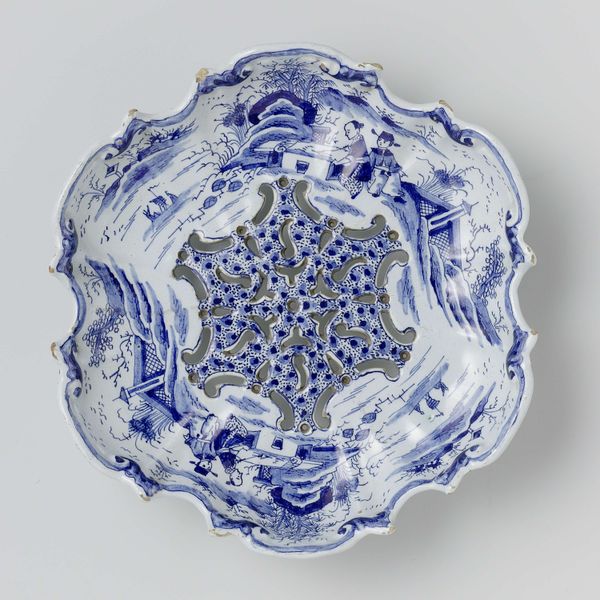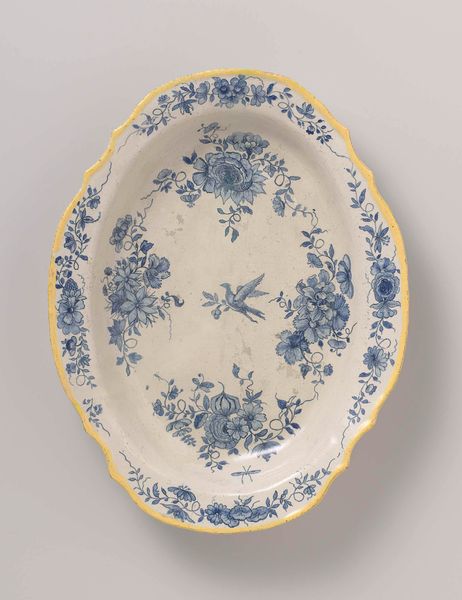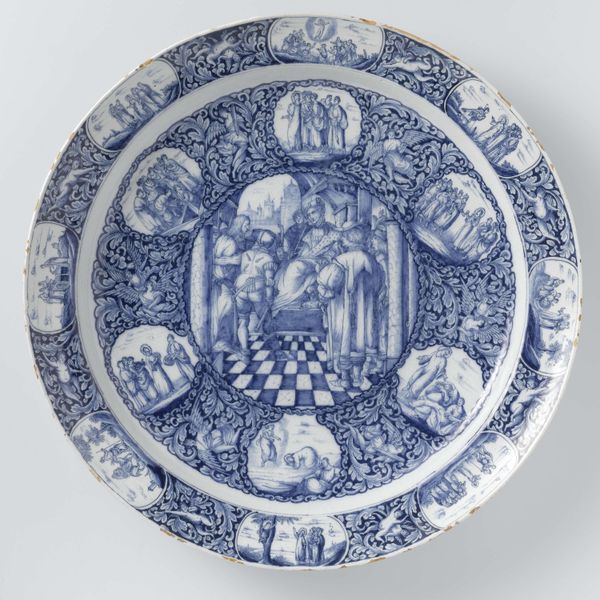
Dimensions: diameter 34.5 cm, height 5 cm
Copyright: Rijks Museum: Open Domain
This faience plate was made by De Porceleyne Byl, and it reflects a pivotal moment in the history of global exchange. Objects like this were not just decorative; they were implicated in complex power dynamics and cultural dialogues. The blue-and-white design, reminiscent of Chinese porcelain, speaks to the West’s historical fascination with, and appropriation of, Eastern aesthetics. Artisans, in workshops across Europe, attempted to replicate the highly sought-after porcelain from China, a process laden with cultural meaning. Consider the labor involved in creating such an object. Who were the hands that shaped and painted this plate, and what was their status in society? Were they seen as skilled artists or merely artisans? The floral design, while seemingly innocent, is embedded in a context of trade routes, colonial ambitions, and the circulation of ideas across continents. It prompts us to reflect on the stories of cultural exchange and the hierarchies of taste and value.
Comments
No comments
Be the first to comment and join the conversation on the ultimate creative platform.
